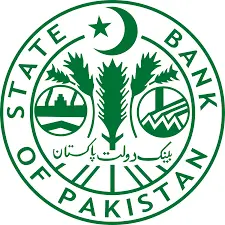Washington DC November 28 2023: Federal Reserve policymakers look increasingly likely to end this year with interest rates on hold and begin 2024 mulling the timing of their first cut in borrowing costs as they try to engineer a “soft landing” for the economy.
That was the overall message on Tuesday from Fed Governor Christopher Waller, a hawkish and influential voice at the U.S. central bank, who noted that any rate cuts would have “nothing to with trying to save the economy or recession,” but rather would be aimed at ensuring monetary policy does not become overly tight as inflation recedes.
“I am increasingly confident that policy is currently well positioned to slow the economy and get inflation back to 2%,” Waller told the American Enterprise Institute think tank. “If we see disinflation continuing for several more months – I don’t know how long that might be, three months, four months, five months … you could then start lowering the policy rate just because inflation’s lower.”
Waller’s remarks sent bond yields lower as investors moved to price a bigger chance of rate cuts next year.
The Fed held its benchmark overnight interest rate steady in the 5.25%-5.50% range at the end of its Oct. 31-Nov. 1 policy meeting, and analysts overwhelmingly expect the same outcome at the Dec. 12-13 meeting.
Waller’s comments included the caveats that are now standard in public appearances by Fed officials.
“Inflation is still too high, and it is too early to say whether the slowing we are seeing will be sustained,” he said. “There is still significant uncertainty about the pace of future activity, and so I cannot say for sure whether the (Federal Open Market Committee) has done enough to achieve price stability.”
‘FAIRLY TIGHT’ JOB MARKET
Speaking at a Utah Bankers Association meeting in Salt Lake City, Fed Governor Michelle Bowman took those doubts further, raising a series of questions about the durability of progress on inflation, which has fallen, by the Fed’s preferred measure, from a high of 7.1% last summer to a recent reading of 3.4%.
“My baseline economic outlook continues to expect that we will need to increase the federal funds rate further to keep policy sufficiently restrictive to bring inflation down to our 2% target in a timely way,” Bowman said. But even Bowman, who like Waller is among the Fed’s most hawkish, stopped short of outright calling for a further increase in the policy rate, saying, like Waller, that it will depend on economic data.
Chicago Fed President Austan Goolsbee, in brief remarks at a separate event, repeated his view that inflation looks set to decline this year at its sharpest pace in more than 70 years.
New inflation data will be released on Thursday, and policymakers will also have a fresh monthly jobs report and other data in hand before they gather next month.
Waller pointed to healthy recent data that have already moved in the Fed’s direction, with consumer prices coming in flat in October, retail spending weakening, and a slow easing in wage growth.
The job market does remain “fairly tight” and bears watching, he said, while a recent drop in long-term market interest rates has tempered some of the credit tightening the Fed relies on to slow the economy.
But long-term interest rates “are still higher than they were before the middle of the year, and overall financial conditions are tighter, which should be putting downward pressure on household and business spending,” Waller said.
“All in all, it seems like output growth is moderating as I had hoped it would, supporting continued progress on inflation.”











